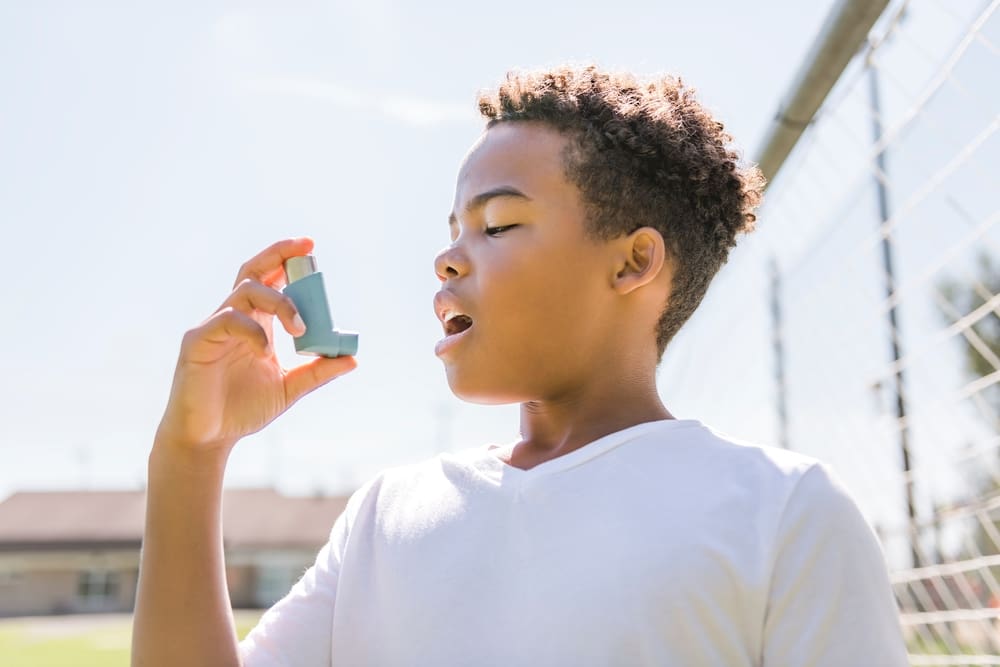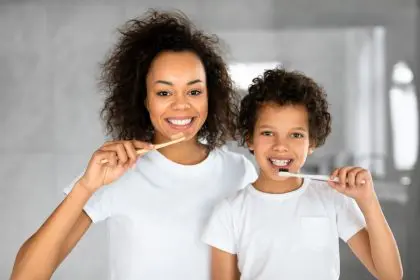Secondhand smoke, also known as environmental tobacco smoke (ETS), refers to the smoke inhaled by those who are not actively smoking. This invisible culprit poses a significant health risk, especially for young children whose lungs are still developing.
This article explores the dangers of secondhand smoke exposure for young children, highlighting the increased risk of asthma and other respiratory problems. It also provides information for parents and caregivers on how to protect children from this harmful exposure.
Understanding Secondhand Smoke and its Impact
Cigarette smoke contains over 7,000 chemicals, including hundreds known to be harmful and 70 known to cause cancer. When someone smokes, these chemicals are released into the air, posing a health risk to anyone nearby, particularly young children.
Children’s lungs are smaller and more sensitive than adults, making them more susceptible to the harmful effects of secondhand smoke. Inhaling these toxins can irritate the airways, leading to coughing, wheezing, and shortness of breath.
Secondhand Smoke and Increased Risk of Asthma
Exposure to secondhand smoke is a significant risk factor for developing asthma in children. Asthma is a chronic lung condition that causes inflammation and narrowing of the airways, leading to wheezing, chest tightness, and shortness of breath.
Here’s how secondhand smoke contributes to asthma in children:
-
Irritated airways: The toxins in secondhand smoke irritate the delicate lining of the airways in children, leading to inflammation and increased mucus production.
-
Increases susceptibility to allergens: Secondhand smoke can make children more sensitive to dust mites and pollen, triggering asthma attacks.
-
Impairs lung development: Exposure to secondhand smoke during critical development stages can hinder the growth and function of children’s lungs, increasing their risk of asthma later in life.
Beyond Asthma: Other Health Risks of Secondhand Smoke Exposure
In addition to asthma, secondhand smoke exposure can cause a variety of other health problems in children, including:
-
Respiratory infections: Children exposed to secondhand smoke are more likely to experience bronchitis, pneumonia, and other respiratory diseases.
-
Ear infections: Secondhand smoke can irritate the Eustachian tubes, which connect the middle ear to the back of the nose and throat, leading to frequent ear infections.
-
Sudden infant death syndrome (SIDS): Exposure to secondhand smoke is a significant risk factor for SIDS, the leading cause of death in babies under one year old.
Protecting Your Child from Secondhand Smoke
The good news is that children are completely protected from secondhand smoke when there is no smoking around them. Here are some steps you can take to safeguard your child’s health:
-
No smoking in the home or car: Prohibit smoking indoors and in vehicles where your child is present to create a smoke-free environment.
-
Ask others not to smoke around your child: politely request friends, family members, and caregivers to refrain from smoking around your child, even outdoors.
-
Choose smoke-free environments: Whenever possible, opt for smoke-free restaurants, parks, and public spaces to minimize your child’s exposure.
-
Advocate for smoke-free policies: Support smoke-free legislation in your community to protect all children from secondhand smoke exposure.
Remember, Every Breath Counts
By creating a smoke-free environment and advocating for clean air, you can significantly reduce your child’s risk of developing asthma and other health problems associated with secondhand smoke exposure. Every breath of clean air makes a difference in their long-term health and well-being.
Addressing Common Concerns and Creating a Support System
Here, we’ll address some common concerns parents and caregivers might have and explore ways to build a support system to keep your child safe from secondhand smoke:
-
What if someone smokes in my home but agrees to smoke outside? While this can help reduce exposure somewhat, secondhand smoke can linger on clothes, furniture, and hair. Please encourage them to quit smoking altogether or designate a well-ventilated outdoor space far from open windows and doors.
-
I live in a multi-unit dwelling. How can I protect my child? Talk to your landlord about implementing a smoke-free building policy. If that’s not feasible, improve ventilation in your unit by using exhaust fans and air purifiers. Seal gaps around windows and doors to prevent smoke from seeping from neighboring units.
-
I’m worried about offending someone by asking them not to smoke around my child. Focus on your child’s health and explain the risks of secondhand smoke exposure. Most people are understanding when it comes to protecting children. You can offer to step outside with them if they need to smoke.
-
I’m struggling to quit smoking myself. There are many resources available to help you quit smoking. Talk to your doctor about smoking cessation programs, medications, and support groups. Quitting smoking is not only beneficial for your health but also creates a smoke-free environment for your child.
Building a Support Network for a Smoke-Free Future
Surrounding yourself with a supportive network can significantly impact your smoke-free journey. Here’s how to build a support system:
-
Talk to your doctor: Your doctor can be a valuable source of information and support. They can help you create a personalized quit plan and connect you with resources.
-
Join a support group. Connecting with others trying to quit smoking can provide encouragement, motivation, and shared experiences.
-
Seek support from family and friends: Let your loved ones know about your decision to quit and ask for their support. They can help you avoid triggers and celebrate your milestones.
-
Connect with online communities: Many online forums and communities are dedicated to smoking cessation. These can be a great source of support and information.
Remember, quitting smoking is a process, and there may be setbacks along the way. Don’t get discouraged – focus on the progress you’ve made and your positive impact on your child’s health.
Conclusion: Every Child Deserves Clean Air
Secondhand smoke poses a serious threat to children’s developing lungs, increasing their risk of asthma and other respiratory problems. By creating a smoke-free environment, advocating for clean air policies, and seeking support, you can safeguard your child’s health and give them the gift of clean air to breathe. Remember, even small changes can significantly affect their long-term well-being.
This story was created using AI technology.










